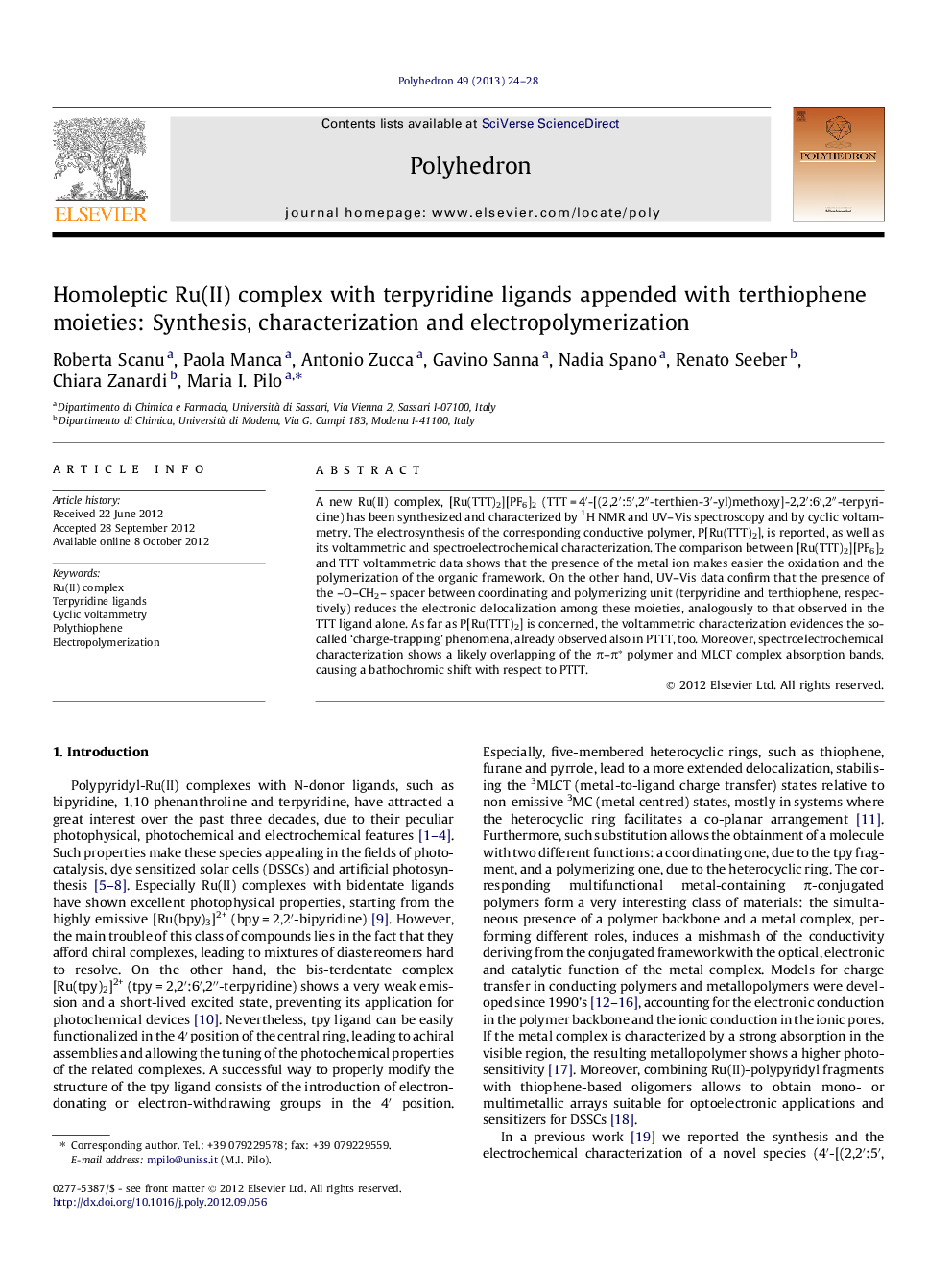| Article ID | Journal | Published Year | Pages | File Type |
|---|---|---|---|---|
| 1338583 | Polyhedron | 2013 | 5 Pages |
A new Ru(II) complex, [Ru(TTT)2][PF6]2 (TTT = 4′-[(2,2′:5′,2″-terthien-3′-yl)methoxy]-2,2′:6′,2″-terpyridine) has been synthesized and characterized by 1H NMR and UV–Vis spectroscopy and by cyclic voltammetry. The electrosynthesis of the corresponding conductive polymer, P[Ru(TTT)2], is reported, as well as its voltammetric and spectroelectrochemical characterization. The comparison between [Ru(TTT)2][PF6]2 and TTT voltammetric data shows that the presence of the metal ion makes easier the oxidation and the polymerization of the organic framework. On the other hand, UV–Vis data confirm that the presence of the –O–CH2– spacer between coordinating and polymerizing unit (terpyridine and terthiophene, respectively) reduces the electronic delocalization among these moieties, analogously to that observed in the TTT ligand alone. As far as P[Ru(TTT)2] is concerned, the voltammetric characterization evidences the so-called ‘charge-trapping’ phenomena, already observed also in PTTT, too. Moreover, spectroelectrochemical characterization shows a likely overlapping of the π–π∗ polymer and MLCT complex absorption bands, causing a bathochromic shift with respect to PTTT.
Graphical abstractA new ruthenium(II) complex, [Ru(TTT)2][PF6]2 (TTT = 4′-[(2,2′:5′,2″-terthien-3′-yl)methoxy]-2,2′:6′,2″-terpyridine) was synthesized. The spectroscopic and electrochemical characterization of the terpyridine-coordinated species, the electrosynthesis of the corresponding polymer P[Ru(TTT)2] and its optical and electrochemical characterization are reported.Figure optionsDownload full-size imageDownload as PowerPoint slide
